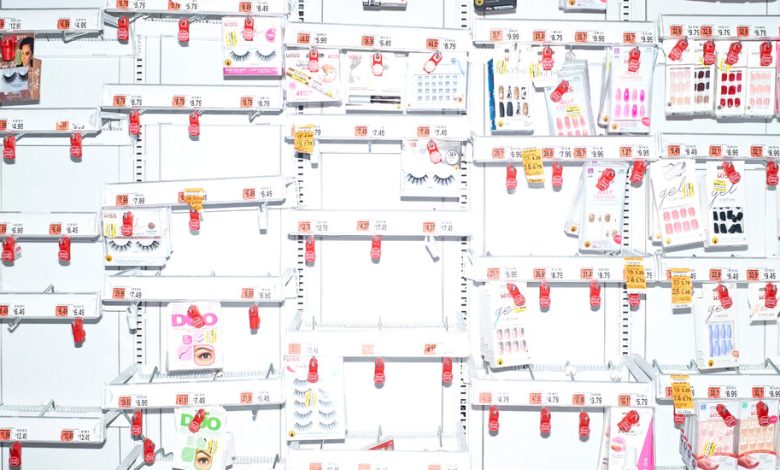Watch What People Do, Not What They Say About the Economy

Have you heard that there’s a huge wave of organized shoplifting — coordinated theft by groups effectively looting stores — sweeping the United States? You probably have. A couple of years ago, Walgreens said that organized shoplifting was behind its decision to close several locations in San Francisco. In April, the National Retail Federation issued a dire report claiming that “organized retail crime” was responsible for almost half of the store merchandise that vanished in 2021. The putative shoplifting tsunami has been relentlessly hyped both by the usual suspects, such as Fox News, and by some politicians.
But it never happened.
My guess is that most readers didn’t notice the retail federation’s recent retraction of its April claims. Probably even fewer people noticed when The San Francisco Chronicle examined police records and found that they didn’t support Walgreens’s assertions; “maybe we cried too much,” the company’s chief financial officer told investors earlier this year.
Data on shoplifting are flaky, depending a lot on retailers’ own reports. Was there really a surge in New York City, while shoplifting declined in the rest of the country? Maybe. What is clear is that the narrative of larcenous mobs sweeping through America’s stores wasn’t a depiction of reality; it was basically conjured out of some dubious data and a handful of videos.
Regular readers will have guessed that I’m going to draw some parallels with economic perceptions. The parallels are in fact striking, although on crime the gap between public perception and data goes back much further.
With respect to crime, the gap began to open up in the early 1990s. For reasons that are still much disputed, violent crime in America began a precipitous decline from around 1990 to around 2015, yet many Americans consistently told pollsters that crime was rising.
Were people accurately reporting their experience, whatever the data may have said? There’s strong evidence to the contrary. For one thing, people were much more positive about crime trends in their own areas — which they could observe at first hand — than they were about the nation as a whole. Also, the era of falling crime corresponds pretty closely with the rise of gentrification, of affluent Americans moving back into inner cities, which appears to have been linked to perceptions of reduced crime. Whatever they told pollsters, Americans voting with their feet — well, their moving vans — were saying that cities were becoming safer.
In short, Americans seem to have been feeling relatively safe themselves but believed that bad things were happening to other people somewhere else.
Now, there was a surge in violent crime, especially homicides, in 2020-21, presumably linked to social disruptions caused by the Covid pandemic. Data for 2022 and partial data for 2023 suggest that this surge is now receding. But are Americans really feeling that improvement? Again, look at what people do, not what they say. Foot traffic in major downtowns is down a lot since before the pandemic — but only on weekdays, when many people are still working from home. Traffic on weekends, when people go downtown for entertainment, shopping and so on, has more or less completely recovered, which is not what we’d see if people were terrified of visiting crime-ridden urban hellscapes.
All of this sounds extremely familiar to anyone studying economic sentiment. In recent years, Americans have been extremely negative about the national economy but much less so about their local economies. And everything we know about what Americans are doing, as opposed to what they tell pollsters, suggests that on average they’re feeling pretty good about their own situation: Consumer spending is strong, new business formation is high, and so on.
One more item about watching what people do, not what they say: Moody’s, the rating agency, has looked at surveys of businesses, like the one conducted by the National Federation of Independent Business. As Moody’s notes, these surveys include both “hard” indicators like hiring and capital expenditure plans, and softer questions, for example what people say they think about the business outlook. Sure enough, the hard indicators — which tell us what businesses are actually doing — are consistent with a strong economy, while the soft indicators are what you’d expect in the midst of a severe recession.
It’s probably worth mentioning that the N.F.I.B. is very Republican; OpenSecrets reports that G.O.P. candidates have received over 99 percent of its contributions so far this election cycle.
Journalists are frequently reluctant to acknowledge that public views of the economy are at odds with reality, lest they be called elitists citing fancy government statistics rather than listening to real people. And I keep seeing almost desperate efforts to find bad news in the economic data.
But the fundamental puzzle isn’t that people are unhappy despite favorable macroeconomic indicators. It is that Americans say that things are terrible but behave as if they’re doing pretty well. And I, at least, am inclined to place more weight on what people do than on what they say.
The Times is committed to publishing a diversity of letters to the editor. We’d like to hear what you think about this or any of our articles. Here are some tips. And here’s our email: [email protected].
Follow the New York Times Opinion section on Facebook, Instagram, TikTok, X and Threads.




